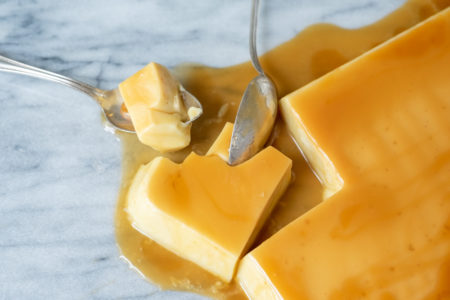A dwarf shrub, cranberries are a classic Thanksgiving ingredient with a unique flavor and texture that come with a variety of health benefits.
History of Cranberries
Native to North America, the first recorded use of cranberries dates back to the 1500s. Cranberries were almost exclusively used by Narragansett people in modern day New England. The use of cranberries slowly started spreading across the United States.
The cranberry is also historically related to Harvard University as it was during the early 1700s that cranberry was served at Harvard University commencement dinners. Subsequently, cranberries started making an appearance in the New York and Boston food scene in the 1800s.
Massachusetts is the largest exporter of cranberries with Wisconsin in second place. 98% of all the cranberries in the world are produced and supplied by the United States, Canada, and Chile.
The Flavor of Cranberries
Cranberries are ruby red in color and sour and bitter in taste. They are considered a superfood due to their high level of antioxidants. Due to their low sugar content, cranberries have a tart-like taste, which make them challenging to eat raw. Many recipes call for the addition of sugar to balance out their tart flavor.

Health Benefits of Cranberries
Cranberries are a good source of vitamins and antioxidants. There is also some evidence that shows that cranberries can reduce the risk of cardiovascular disease because they contain polyphenols. Some studies indicate that cranberries reduce the growth and spread of cancer by killing the cancer cells and reducing inflammation. Cranberries are also high in fiber, making them a healthy addition to any diet.
Culinary Benefits of Cranberry
Let’s first talk about the elephant in the room: cranberry sauce. Jiggly and gelatinous, what Thanksgiving would be complete without this classic sauce? The bittersweet flavor of the cranberries is the ideal companion to savory turkey and rich mashed potatoes. Looking for a great cranberry sauce recipe? Search no more. Try out our slow-cooked cranberry sauce recipe.
For a sweet tart kick, we love sweetened cranberry juice on ice with a squeeze of lemon. Cranberries can also be used in pies, cocktails, desserts, or a variety of sauces; the possibilities are nearly endless.
Try out this awesome recipe which combines roasted chicken with cranberries, apples, and wild rice! One of the best uses of cranberries is in baked goods. The berries can be used in muffins, cakes, scones, and bread. The famous Cosmopolitan cocktail uses cranberry juice as one of its key ingredients.

Types of Cranberries
There are over 100 varieties of Cranberries. Some of the best types or varieties of cranberry include Ben Lear, Crimson Queen, Early Black, Franklin, Howes, McFarlin, Pilgrim, Scarlet Knight, and Stevens. The most commonly cultivated type is the Vaccinium Macrocarpon. The other two types or species of cranberry are Vaccinium Oxycoccos and Vaccinium microcarpum.
Storage of Cranberries
Fresh cranberries should be stored in the refrigerator and frozen cranberries will keep to 9 months. Look for fresh, frozen, or canned cranberries at your local grocery store.
Feature Image: misskursovie2013 from Pixabay



